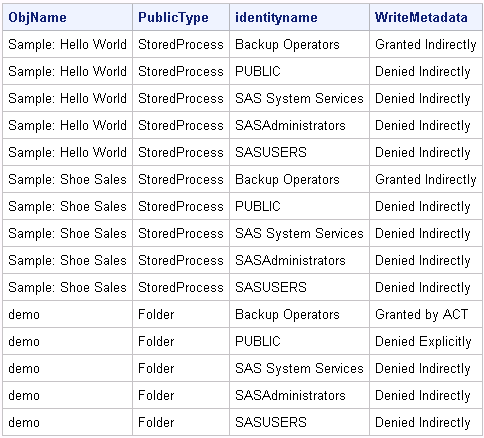Overview of Authorization Reporting
Authorization
reporting creates a snapshot of metadata layer access control settings
and uses that snapshot in these ways:
The first task in security
reporting is to extract, filter, and format authorization data for
a specified set of identities, permissions, and objects. SAS provides
macros that help you perform this task. For example, the following
code uses the main security report macro, %MDSECDS, to generate authorization
data sets for a specified folder and its contents:
/* connect to the metadata server */ options metaserver=machine-name metauser="sasadm@saspw" metapass="{sas002}3CD4EA1E35CA49324AOC4D63"; /* run the main report macro against a target folder */ %mdsecds(folder="\demo"); run;
The second task in security
reporting is to build reports that run against the authorization data
sets. For example, the following code prints some of the data from
the preceding example:
/* print the WriteMetadata information */ proc print data=work.mdsecds_join noobs; var objname publictype identityname WriteMetadata; run;
Because the output is
SAS data sets, you can create sophisticated reports by using SAS reporting
techniques such as these:
For details, options,
and examples, see %MDSECDS.
